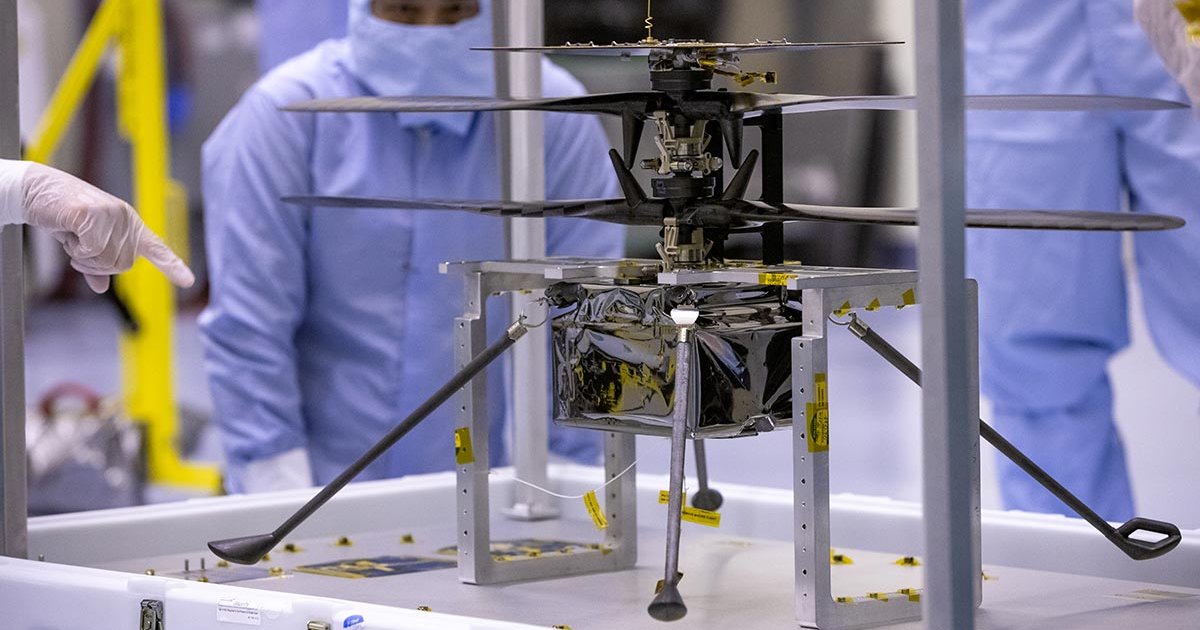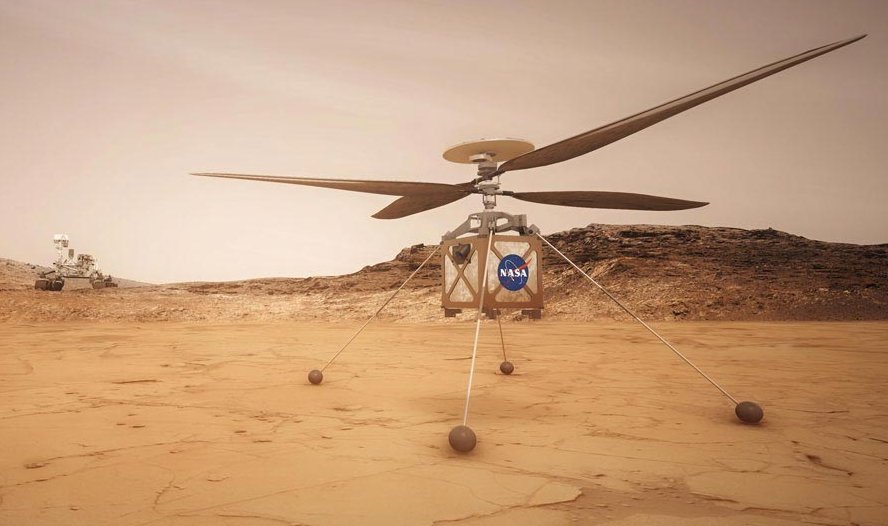
Image: NASA
As the Mars 2020 mission launch approaches, another important step has been completed – attaching a solar powered helicopter to the Perseverance rover’s belly.
The Mars 2020 mission is part of NASA’s Mars Exploration Program, a robotic investigation of the Red Planet. This mission will see another rover landed on the planet; but unlike the Spirit and Opportunity rovers before it Perseverance will be nuclear powered – as is the Curiosity rover currently exploring Mars.
What will be solar powered is a helicopter drone.

Artist’s Impression – Image: NASA
The helicopter, which weighs 1.8 kilograms and has twin counter-rotating propellers of 1.2 metres diameter, was safely stowed in its delivery system on Perseverance’s belly on April 6; a process that took a full day.
NASA says and engineers made 34 electrical connections between the rover, the helicopter and its delivery system as part of this task before attaching. It was then confirmed the helicopter could receive an electrical charge from the rover.
Before being deployed onto the surface of Jezero Crater, the Mars Helicopter will rely on the rover for power. From then on, it will generate its own electricity through a solar panel located above its propellers. The solar energy will be stored in a lithium-ion battery pack weighing 273 grams. According to Wikipedia, the battery pack is comprised of six Sony Li-ion cells with a nameplate capacity of 2 Ah.
First Powered Flight On Another World
Assuming suitable conditions, the helicopter is able to make a flight of up to 90 seconds duration once a day. It has a maximum range of 300 metres and a radio range with the rover of 1,000 metres. The craft is expected to be deployed around 5 times over a period of 30 days and will see its first deployment approximately two-and-a-half months after Perseverance lands. This will be the first time powered flight has been tested on another world.
The mission is timed for a launch opportunity in July 2020 and at this point, the landing date is estimated to be on February 18, 2021.
The mission is part of a larger program preparing for human exploration of the Red Planet. Others have bigger plans – for example, Tesla CEO Elon Musk and SpaceX are eyeing eventual colonisation of Mars.
While some would argue we should be spending more money and effort on looking after this planet, which could certainly do with more TLC, it’s all interesting stuff. You can learn more about the Mars 2020 mission here.

 RSS - Posts
RSS - Posts



Speak Your Mind